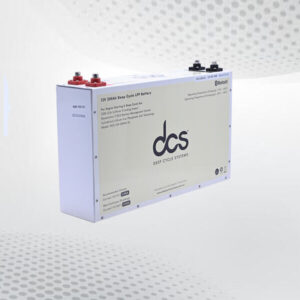If you own a Toyota Hilux, you are probably familiar with the importance of the fuel lock ring. This small but essential component ensures that your vehicle’s fuel system functions properly. In this blog post, we will discuss everything you need to know about the Toyota Hilux Fuel Lock Ring, including its role, common symptoms of a faulty lock ring, troubleshooting tips, replacement procedures, maintenance tips, and how to choose the right replacement fuel lock ring for your Toyota Hilux. Understanding the intricacies of this component can help you maintain your vehicle’s performance and prevent potential issues.
Understanding the Role of the Toyota Hilux Tank O-Ring
The Toyota Tank O-Ring, often called the fuel lock ring, is a crucial component at the top of the fuel tank. Its primary function is to secure the fuel pump module to the tank, ensuring a tight seal that prevents fuel leaks and contaminants from entering the fuel system. This sealing capability is critical for maintaining the integrity of the fuel system and ensuring the safety and efficiency of the vehicle’s operation.
Without a properly functioning Toyota Hilux Tank O-ring, the risk of fuel vapour leaks increases, which can lead to a decrease in fuel efficiency, potential environmental hazards, and even a fire risk under certain conditions. Additionally, the seal created by the O-ring helps to maintain the correct fuel pressure within the system, a factor vital for the smooth operation of the engine. In environments where the vehicle is exposed to extreme temperatures or corrosive substances, the durability of the tank O-ring is put to the test.
Over time, exposure to these harsh conditions can degrade the O-ring, leading to cracks, brittleness, and, eventually, seal failure. This underscores the importance of regular inspection and timely replacement of this seemingly small yet undeniably important part of your Toyota Hilux’s fuel system.
Common Symptoms of a Faulty Fuel Lock Ring in a Toyota Hilux
Identifying a compromised fuel lock ring in your Toyota Hilux is critical for maintaining the vehicle’s performance and safety. When this component begins to fail, it typically signals its distress through various symptoms that can affect the overall driving experience. One of the primary indicators is the presence of fuel leaks, particularly around the fuel tank area. A noticeable fuel odour around the vehicle can often accompany this.
Engine performance issues can arise in addition to leaks. You may notice your Hilux stalling or hesitating, especially under acceleration, which points to an irregular fuel supply caused by a potential breach in the fuel system’s integrity. Starting troubles are another symptom; if the engine takes longer than usual to fire up, it might struggle to receive the correct amount of fuel.
Unusual noises from the fuel tank area should not be ignored. Sounds such as whirring, buzzing, or clicking could indicate that the fuel pump is working harder than normal to maintain fuel pressure, a task made difficult by a faulty fuel lock ring.
Each of these symptoms can degrade your vehicle’s reliability and performance. They underscore the importance of prompt inspections and interventions. Ignoring these warning signs could lead to more severe consequences, including risks to your safety and costly repairs down the line. If you suspect your Toyota Hilux is exhibiting any of these symptoms, it’s advisable to seek professional diagnostic services to identify the issue and undertake the necessary repairs accurately.
Troubleshooting the 2004 Mazda 3 Fuel Pump Lock Ring Problems
The 2004 Mazda 3 is a popular model for its reliability and performance. However, like any vehicle, it can experience issues with its fuel system. One common problem is the fuel pump lock ring, which secures the fuel pump inside the tank. Here’s a guide to troubleshoot issues with the fuel pump lock ring on a 2004 Mazda 3.
Symptoms of a Faulty Fuel Pump Lock Ring
If you’re experiencing problems with the 2004 Mazda 3 Fuel Pump Lock Ring, you might notice symptoms such as difficulty starting the engine, decreased fuel efficiency, or leakage. A faulty lock ring can lead to a poor seal around the fuel pump, causing fuel to leak and potentially leading to a fire hazard.
Diagnosing the Issue
Visual Inspection:
Start by inspecting the area around the fuel pump for any signs of fuel leakage. Check for wet spots or a strong smell of gasoline, which can indicate a problem with the lock ring.
Listen for Unusual Sounds:
Listen for any unusual noises from the fuel tank area when the engine is running. A whining or buzzing sound could suggest a loose or damaged lock ring.
Check Fuel Pressure:
Use a fuel pressure gauge to check if the fuel pressure is within the manufacturer’s specifications. Low fuel pressure can indicate a problem with the lock ring or the fuel pump.
Fixing the Problem
If you’ve diagnosed an issue with the fuel pump lock ring, it’s crucial to address it promptly. Ensure that the lock ring is properly tightened and secure. If the ring is damaged, it may need to be replaced. Always use parts that meet the manufacturer’s specifications to ensure proper fit and function.
How to Replace a Toyota Fuel Lock Ring Safely?
When embarking on replacing a fuel lock ring on your Toyota Hilux, it’s crucial to adhere to a set of guidelines designed to prioritise safety and ensure the procedure is conducted correctly. Initiating this process involves several critical steps:
Preparation:
Before starting, ensure the vehicle is parked on a level surface, and the engine is cool. This reduces the risk of accidents or spills during the process.
Battery Disconnection:
The first step in the procedure is to disconnect the negative terminal of the battery. This is a safety measure to prevent any sparks or electrical currents from igniting fuel vapors.
Fuel Tank Removal:
Carefully remove the fuel tank from your Hilux. This may require jacking up the vehicle to access the tank’s retaining straps and bolts. Once accessible, detach the tank and safely drain any fuel inside into an appropriate container.
Accessing the Fuel Pump Module:
With the fuel tank removed, locate the fuel pump module. You will need to disconnect the fuel lines and electrical connections. Handle these components with care to avoid damage.
Replacing the Lock Ring:
Using a fuel lock ring tool specifically designed for this purpose, remove the old lock ring. This step must be handled with care to prevent damage to the tank or the fuel pump module. Once removed, carefully position the new fuel lock ring and secure it, ensuring a tight and proper seal.
Reassembly:
After the new lock ring is securely placed, reverse the disassembly steps. Reattach the fuel lines and electrical connections to the fuel pump module. Then, reinstall the fuel tank, ensuring it is securely fastened.
System Check:
Once everything is reassembled and the battery reconnected, it’s important to conduct a thorough check for leaks or other issues. Then, start the vehicle and observe its performance to ensure the replacement has been successful.
Maintenance Tips for Prolonging the Life of Your Mazda 3 Fuel Pump Lock Ring
Start with regular inspections to ensure the longevity of your Mazda 3 fuel pump lock ring. Check for signs of wear, corrosion, or leaks around the fuel pump area. Addressing these issues early can prevent more severe problems and extend the life of the lock ring.
2. Proper Fuel Management
Avoid running your vehicle on an empty tank frequently. Low fuel levels can lead to sediment and debris from the bottom of the tank reaching the fuel pump, which may cause wear and tear on the lock ring. Keeping your tank at least a quarter full helps reduce this risk.
3. Use High-Quality Fuel
Always use high-quality fuel from reputable sources. Contaminated or poor-quality fuel can affect the fuel pump’s performance and its components, including the lock ring. Consistent use of clean, high-grade fuel will help maintain the integrity of the lock ring and other related parts.
4. Avoid Overfilling the Tank
Overfilling your gas tank can cause fuel to spill into the evaporative emissions system, which may damage the lock ring. Stick to filling the tank to the recommended level to avoid unnecessary stress on the fuel system.
5. Address Fuel System Issues Promptly
If you notice any irregularities, such as unusual noises, reduced fuel efficiency, or difficulty starting your car, have your fuel system checked promptly. Early diagnosis and repair can prevent further damage to the lock ring and other components.
Choosing the Right Replacement Fuel Lock Ring for Your Toyota Hilux
Selecting the appropriate replacement fuel lock ring for your Toyota Hilux is critical for maintaining the vehicle’s fuel system integrity and ensuring optimal performance. Opt for a replacement part that adheres to or surpasses the original equipment manufacturer’s (OEM) specifications.
Compatibility with your specific model of Toyota Hilux is paramount, as utilizing an incorrect part could lead to further complications or inadequate sealing. It is highly advisable to seek advice from a trusted automotive professional or a dealership specialized in Toyota vehicles. These experts can offer invaluable guidance on the most suitable replacement part based on your vehicle’s year, model, and any specific requirements.
Additionally, purchasing from reputable sources guarantees that the replacement fuel lock ring you select will deliver the reliability and durability expected to keep your Hilux running smoothly. Remember, investing in a quality replacement part now can save time and money and prevent potential fuel system issues down the line.
Conclusion
Maintaining the optimal performance of your Toyota Hilux’s fuel system is paramount, and the Toyota Hilux fuel lock ring plays an integral role in this process. Being attentive to the symptoms of a failing fuel lock ring and taking proactive steps to address these issues can significantly impact your vehicle’s functionality and safety. It’s imperative to recognise importance of this component, not only for the prevention of fuel leaks but also for preserving the overall health of your engine. Undertaking timely replacements and adhering to a strict maintenance schedule can mitigate potential risks and extend the lifespan of your vehicle.
FAQS
Q: What signs indicate the need for a replacement for a Toyota Hilux fuel lock ring?
A: If you notice signs such as persistent fuel odours or visible leaks near the fuel tank, or if your vehicle is experiencing issues like stalling, difficulty starting, or odd noises from the fuel tank region, it might be time to inspect and potentially replace the Toyota Hilux fuel lock ring.
Q: Is replacing the fuel lock ring on my Toyota Hilux a DIY job?
A: Individuals who are experienced in car maintenance and comfortable with the procedure can replace the fuel lock ring. However, due to the potential risks involved with working near the fuel system, it’s generally advised to seek the expertise of a professional mechanic. They can ensure the replacement is done safely and correctly.
Q: Where is the best place to find a replacement fuel lock ring for my Toyota Hilux?
A: You can find quality replacement fuel lock rings through several channels. Authorised dealerships, reputable auto parts stores, and established online retailers are your best bets for finding a part that meets or exceeds OEM standards. Ensure you select a part compatible with your Hilux’s specific model and year to guarantee a perfect fit and optimal performance. Consulting with a trusted automotive expert or mechanic can also help you make the right choice for your vehicle.
| Related Business Listings |
| Contact Directory |
| Local Business Profiles |



